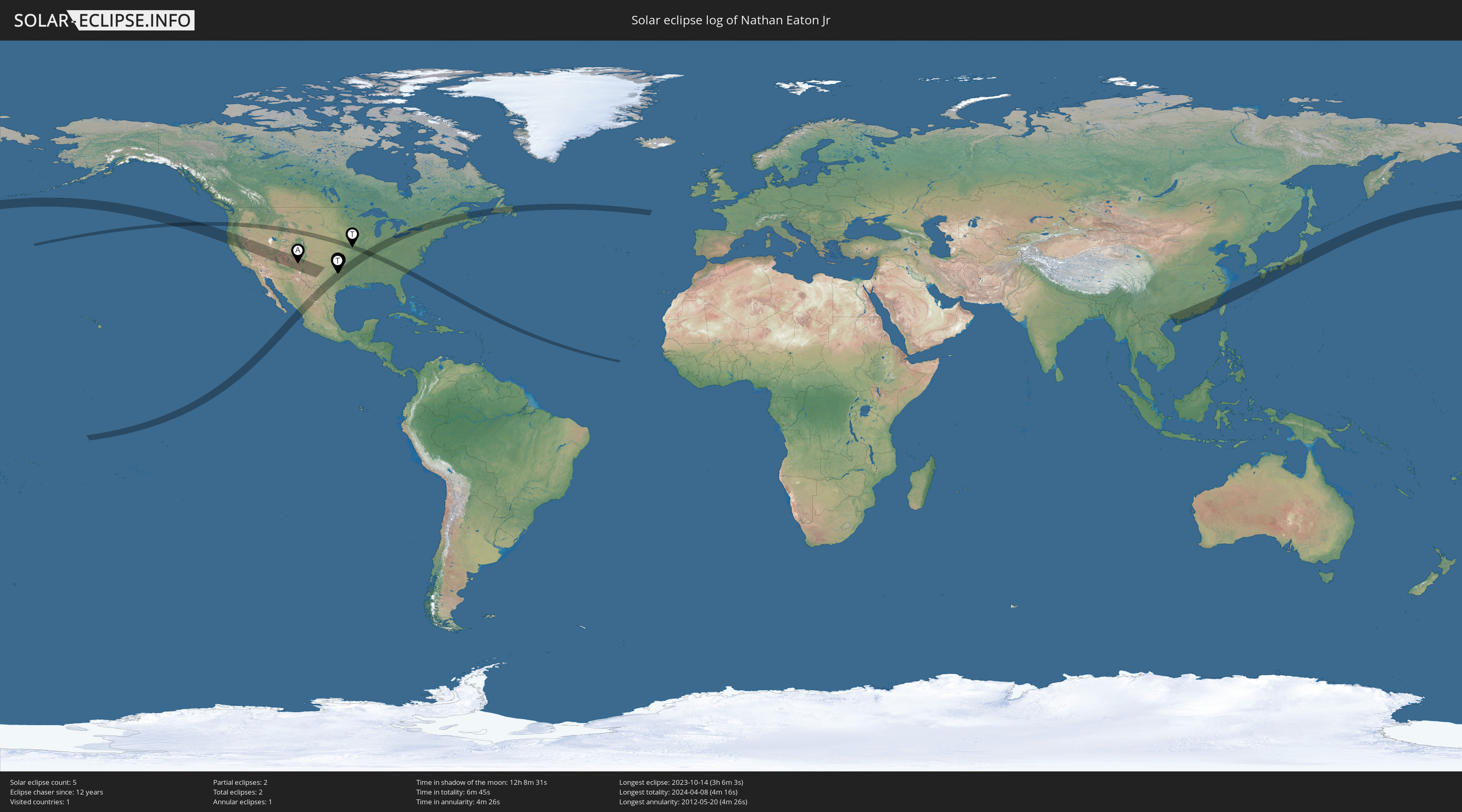 |
| Sequence from 2012 Annular Solar Eclipse Photo by Nathan Eaton |
We are just a month away from the next solar eclipse! On October 14th, 2023, people from the upper west coast down across Texas and in parts of Central and South America will have the opportunity to see an annular solar eclipse. As with all solar eclipses, this one involves the Moon passing between the Earth and the Sun. This time, the Moon will be farther out in its orbit around the Earth, making its angular size just a bit smaller than that of the Sun. In such a case, the Moon doesn't quite cover the face of the Sun. Consequently, at mid-eclipse viewers along the centerline of the eclipse track will get to see the Ring of Fire, a view in which the Moon is centered over the Sun with a fraction of the solar surface showing all round the Moon.
The image sequence above is one I took during an annular eclipse in 2012 when we were visiting Albuquerque, New Mexico. Shot with a Nikon D7000 DSLR through a telephoto lens and a Baader film white light filter, it shows the eclipse from near the start at top left as the Moon has begun to cover the Sun, progressing across and down to the Ring of Fire view at bottom left then on through near the eclipse end at bottom right. For that eclipse, the Sun set before the eclipse was over so I wasn't able to get any shots of the final phase. The reason for the yellow color in that last shot is partly because the Sun was close to sunset and partly due to heavy smoke in the atmosphere from fires west of Albuquerque. Basically, the image came out yellow for the same reason a sunset with heavy clouds to the west looks yellowish to reddish; the denser atmosphere with heavy particulates (in this case, smoke) filters out shorter wavelengths, only letting the longer (and redder) wavelengths through.
To see how close the path of the eclipse comes to where you live and to see where and when you can view it in person, check out Xavier Jubier's interactive map for the eclipse. Click anywhere on the map and it will give you details of the eclipse for that location including when it starts and ends, how long it lasts and how much of the Sun will be eclipsed by the Moon. Note that the path of the eclipse on the map represents the areas where the annular form of the eclipse will be visible. In the Dallas area, we'll experience a partial eclipse since the Moon never moves completely over the face of the Sun from our vantage point. Unfortunately, we won't get to see the Ring of Fire here.
Where will you be during the eclipse?
See the NASA eclipse page for more information on this eclipse as well as the total solar eclipse next April.
WARNING
Be sure to NEVER look directly at the sun without appropriate eye protection. Read up on safe viewing techniques before viewing the eclipse.





















No comments:
Post a Comment